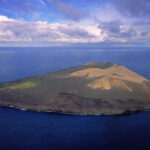The story of Pioneer Cemetery in San Bernardino, California, is deeply intertwined with the early settlement and development of the region. Established amidst the vast ranchos of Antonio Maria Lugo and Juan Bandini in the 1830s, this burial ground stands as a silent testament to the pioneering families who shaped the landscape of present-day San Bernardino and Riverside counties. These were not just any settlers; they were emigrants from Abiquiu, New Mexico, strategically invited to colonize the upper Santa Ana River area. Their mission was to create a buffer against raids and outlaws that plagued the vital trading route stretching from Santa Fe to Los Angeles.
In 1842, the first wave of these families established Politana on Rancho San Bernardino. Among them, ten families, under the leadership of Lorenzo Trujillo, ventured eastward. They settled on 2,000 acres within the “Bandini Donation,” bordering the Jurupa Rancho. This settlement, initially known as “La Placita de los Trujillos,” and later simply La Placita, marked a significant expansion. Simultaneously, a second group journeyed westward across the river, founding Agua Mansa. By 1845, these twin communities were thriving. An intricate irrigation system was developed, transforming the land into fertile farmsteads yielding grapes, grains, vegetables, and fruit trees. Livestock grazed on the mesa towards the southeast, in what is now Riverside, showcasing the burgeoning agricultural prosperity.
Agua Mansa experienced remarkable growth until disaster struck in January 1862. A catastrophic flood, swelling the Santa Ana River to unprecedented levels, devastated the west bank community. Amidst the widespread destruction, only the cemetery, the chapel, and Cornelius Jensen’s store, dating back to 1854, managed to withstand the deluge. La Placita also suffered considerable damage, with many homes destroyed or severely impacted. While both communities were rebuilt, they never fully recovered their former prominence.
Several factors contributed to the gradual decline of these once-vibrant farming communities. The arrival of the railroad revolutionized transportation and drew populations towards new centers of commerce. The burgeoning cement industry and the expanding citrus industry offered alternative economic opportunities, further enticing residents away from the traditional agricultural lifestyle of Agua Mansa and La Placita. Despite the shifts, La Placita remained a recognized community of Riverside until 1926. The Trujillo cantina, a local landmark, eventually closed its doors during World War II. The last known burial in the Pioneer Cemetery, a poignant marker of time and change, took place in 1963.
Today, Pioneer Cemetery stands as a historical landmark, a tangible link to the early pioneers of San Bernardino. It serves as a reminder of the resilience, hardships, and enduring legacy of those families who played a crucial role in shaping the region’s history. Visiting Pioneer Cemetery offers a unique opportunity to reflect on the past and appreciate the foundations upon which modern San Bernardino County was built.

